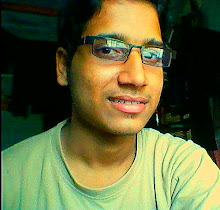 Michael Madhusudan Datta, Datta also spelled Dutt (born Jan. 25, 1824, Sāgardari, Bengal, India —died June 29, 1873, Calcutta, India), poet and dramatist, the first great poet of modern Bengali literature.
Michael Madhusudan Datta, Datta also spelled Dutt (born Jan. 25, 1824, Sāgardari, Bengal, India —died June 29, 1873, Calcutta, India), poet and dramatist, the first great poet of modern Bengali literature.Datta was a dynamic, erratic personality and an original genius of a high order. He was educated at the Hindu College, Calcutta, the cultural home of the Western-educated Bengali middle class. In 1843 he became a Christian.
Madhusudan began writing while at Hindu College. He drew everyone's attention at a college function when he recited a self-composed poem. He won several scholarships in college exams as well as a gold medal for an essay on women's education. While a student at Hindu College, Madhusudan's poems in Bengali and English were published in Jnananvesan, Bengal Spectator, Literary Gleamer, Calcutta Library Gazette, Literary Blossom and Comet. Lord Byron was Madhusudan's inspiration.Michael's exceptionally colourful personality and his unconventional, dramatic and in many ways tragic life have added to the magnetism and glamour of his name. Generous in friendship, romantic and passionate by temperament, he was also fond of the good life; he was financially irresponsible, and an incorrigible spendthrift. He experimented not only in the field of writing, but also in his personal life.
On 9 February 1843, Madhusudan ran away from home and converted to Christianity, to escape a marriage his father had arranged and also to satiate his fascination with everything English and Western. He took the name 'Michael' upon his conversion and wrote a hymn to be recited on the day of his Baptism. However, on becoming a Christian, Madhusudan had to leave Hindu College as Christians were not allowed to study there during that time. In 1844, he got admitted to Bishop's College and remained there until 1847. There, he also studied Greek and Latin.Madhusudan's conversion to Christianity estranged him from his family, and his father stopped sending him money. In 1848, Michael left for Madras where he started teaching, first at Madras Male Orphan Asylum School (1848-1852) and then at Madras University High School (1852-1856). Besides teaching, Madhusudan was also involved with a number of newspapers and journals. He edited the Eurasian (later known as the Eastern Guardian), the Madras Circulator and General Chronicle and the Hindu Chronicle. He also worked as Assistant Editor of the Madras Spectator (1848-1856).
His early compositions were in English, but they were unsuccessful and he turned, reluctantly at first, to Bengali. His principal works, written mostly between 1858 and 1862, include prose drama, long narrative poems, and lyrics. His first play, Sarmistha (1858), based on an episode of the ancient Sanskrit epic, the Mahābhārata, was well received. His poetical works are Tilottamasambhab (1860), a narrative poem on the story of Sunda and Upasunda; Meghnadbadh (1861), his most important composition, an epic on the Rāmāyaṇa theme; Brajangana (1861), a cycle of lyrics on the Rādhā-Kṛṣṇa theme; and Birangana (1862), a set of 21 epistolary poems on the model of Ovid’s Heroides.
While in Madras, Madhusudan married Rebecca Mactavys Thompson and had a family by her. Meanwhile, his mother died and then his father. After his father's death, Madhusudan abandoned Rebecca and his first family due to a failed marriage and returned to Kolkata in February 1856 to live with a Frenchwoman named Henrietta White and had a second family by her. She and Michael did not seem to have been formally married, presumably because Rebecca had never granted him divorce. There is no record either of their marriage or of Michael obtaining a divorce from Rebecca.
In Kolkata, Michael first worked as a clerk at the police court and then as interpreter. He also started contributing to different journals. His friends urged him to write in Bengali.
Madhusudan realised the paucity of good writing in Bengali as well as his own ability to fill this vacuum. While translating ramnarayan tarkaratna's play Ratnavali (1858) into English, he felt the absence of good plays in Bengali. He became associated with the belgachhiya theatre in Kolkata patronised by the Rajas of Paikpara. In 1858 he wrote the western-style play Sharmistha based on the mahabharata story of Devayani and Yayati. This was the first original play in Bengali, making Madhusudan the first Bengali playwright.By dint of his genius, he removed the stagnation in bengali literature both in style and content. He was the first to use blank verse in 1860 in the play padmavati based on a Greek myth. This use of blank verse freed Bengali poetry from the limitations of rhymed verse. This success prompted Madhusudan to write his first Bengali poem, Tilottama-Sambhava in blank verse in that very same year. It is based on the Puranic story of the war waged on the Gods by the demon brothers Sunda and Upasunda. This poem was written entirely in blank verse, and so were the two later poems Meghnad-Badh Kavya (Ballad of Meghnad's Demise in Ramayana) in 1861 and Virangana. The later poems silenced the critics and detractors, and permanently established the vogue of blank verse literature.













